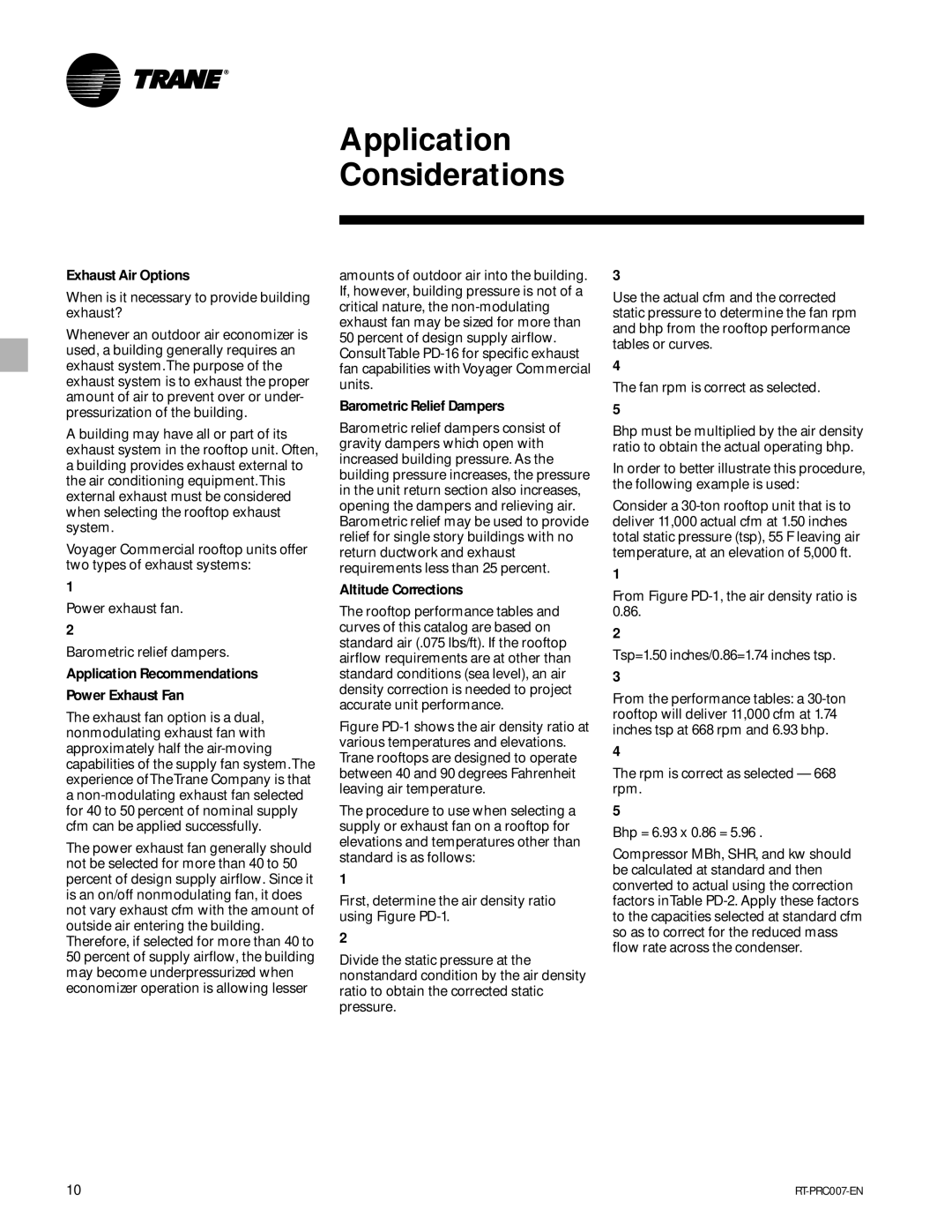RT-PRC007-EN specifications
The Trane RT-PRC007-EN is a part of Trane’s highly regarded line of air-cooled chillers, designed to provide exceptional performance and efficiency for a variety of commercial applications. This model is known for its robust engineering and cutting-edge technologies, making it a favored choice among facility managers and HVAC professionals.One of the key features of the RT-PRC007-EN is its energy efficiency. Its advanced compressor design, alongside innovative heat exchanger technology, allows it to achieve significant energy savings, meeting or exceeding standards set by the Department of Energy. This efficiency not only results in lower operational costs but also contributes to a smaller carbon footprint, making it an environmentally friendly choice.
The chiller is equipped with variable speed compressors which adjust their output in relation to the cooling demand. This feature ensures optimal performance at all times, reducing energy consumption during partial load operations. Additionally, the RT-PRC007-EN incorporates Trane's unique Adaptive Control technology. This intelligent control system continuously monitors system parameters and environmental conditions, optimizing performance in real-time to ensure reliable operation.
Another standout characteristic of the RT-PRC007-EN is its quiet operation. The inclusion of sound-dampening technology and strategically placed acoustic insulation allows this chiller to operate with minimal noise, making it suitable for installations in noise-sensitive environments like hospitals or schools.
Durability is another hallmark of the RT-PRC007-EN. Built with high-quality materials, it is designed to withstand harsh operating conditions. Its corrosion-resistant components ensure longevity and reduce the need for extensive maintenance, making it a reliable choice for operators.
Lastly, the RT-PRC007-EN comes with a variety of customization options, including different refrigerant types, control systems, and capacity configurations. This flexibility allows it to adapt to the specific needs of different applications and building designs.
In summary, the Trane RT-PRC007-EN represents a fusion of efficiency, reliability, and advanced technology, making it an excellent option for those seeking a cutting-edge air-cooled chiller for their commercial HVAC needs.

